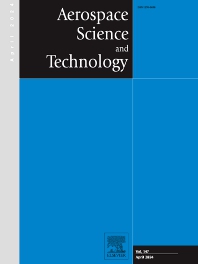Journals in Aerospace sciences
Journals in Aerospace sciences
Our Aerospace Sciences collection offers comprehensive coverage of aerodynamics, propulsion, avionics, space systems, and aerospace materials. Showcasing cutting-edge research and practical innovations, this portfolio supports aerospace engineers, researchers, and students in advancing aircraft and spacecraft design, safety, and performance. Emphasizing sustainability, automation, and AI integration, these resources address critical challenges in aviation and space exploration, offering actionable insights grounded in real-world case studies and theoretical advances.
Aerospace Science and Technology
Aerospace Science and Technology publishes articles related to aerospace research, fundamental and applied, potential applications of which are clearly related to: The design and the manufacture of aircraft, helicopters, missiles, launchers and satellitesThe control of their environmentThe study of various systems they are involved in, as supports or as targets.Authors are invited to submit papers on new advances in the following areas of aerospace engineering and applications:• Aeroacoustics • Aerodynamics • Aeroelasticity • Aerostructures • Air transport systems • Air vehicle engineering • Complex system engineering • Decision aid • Earth observation • Propulsion • Flight Mechanics • Fluid dynamics • Information processing • Instrumentation • Navigation, guidance and control • Robotics and intelligent systems • Test facilities • Turbomachinery • Space vehicle and satellite engineering- ISSN: 1270-9638

Progress in Aerospace Sciences
Progress in Aerospace Sciences is an invitation only international review journal designed to be of broad interest and use to all those concerned with research in aerospace sciences and their applications in research establishments, industry and universities. The journal is devoted primarily to the publication of specially commissioned review articles designed to bring together under one cover current advances in the ever-broadening field of aerospace sciences. No artificial limits are imposed on the length of papers and authors are encouraged to provide specialist readers with an orderly and concise summary of recent work, including sufficient detail for more general aerospace readers to be informed of recent developments in fields other than their own.The coverage of the journal includes timely reviews in aeronautics and astronautics, especially in important aerospace areas such as aero- and gas dynamics, aero-and space structures, flight mechanics of air and space vehicles, materials, vibrations, aeroelasticity, acoustics, aero- and space propulsion, avionics, and occasionally some related areas as well, such as wind engineering and hydrodynamics. "While the emphasis is on reviews of current developments, papers providing historical perspectives on important past developments and their pioneers are also welcome. Occasionally, the journal also publishes reviews of new books on aerospace topics."- ISSN: 0376-0421
